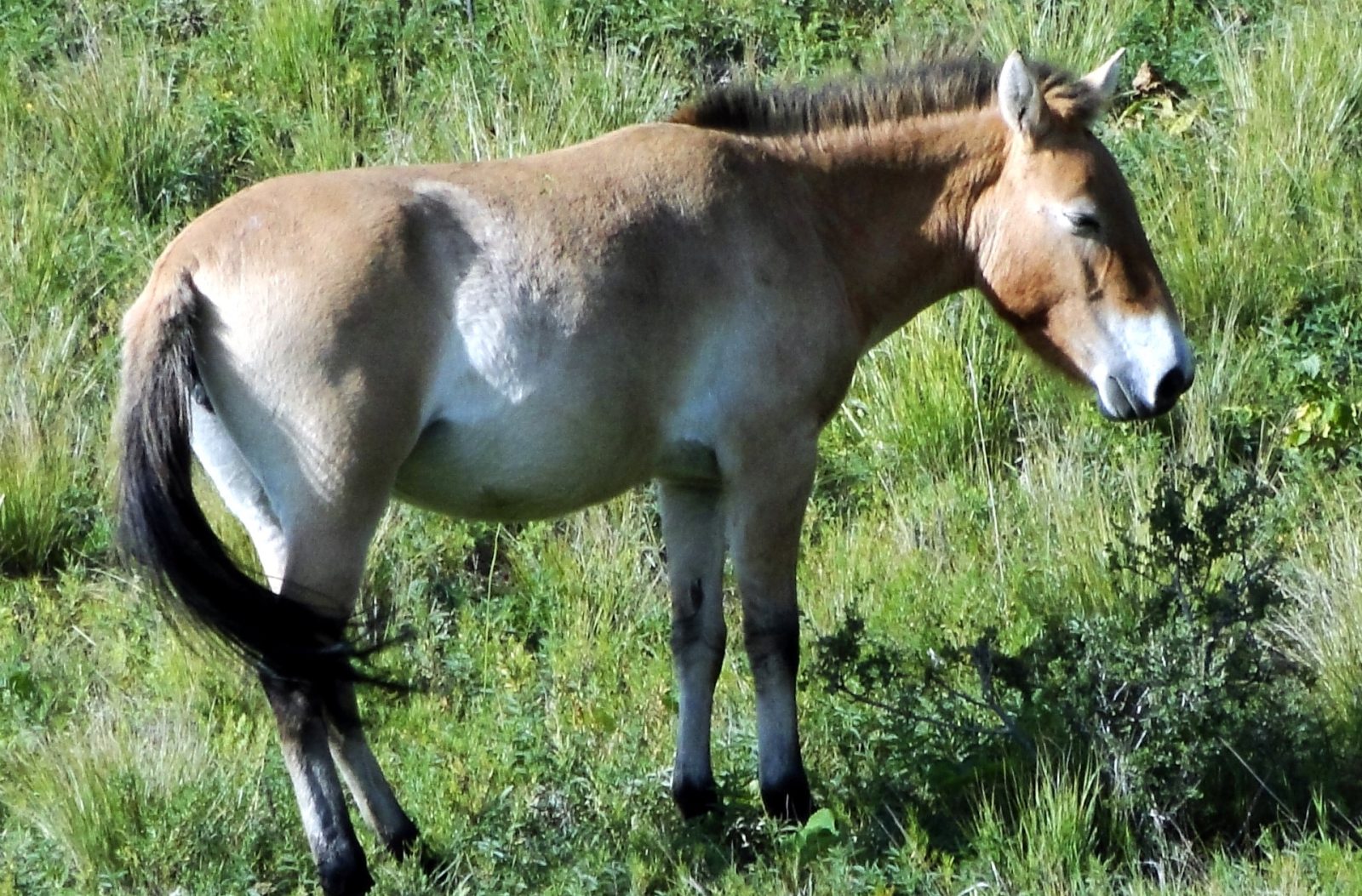
Przewalski horse
 Also known as Takhi, Mongolian wild horse or Dzungarian horse, is a rare and endangered horse originally native to the steppes of Central Asia. This is a particularly interesting species, as it is the only truly native remaining wild horse. It is true that there are wild horses in a variety of locations around the world, but they are feral horses.
Also known as Takhi, Mongolian wild horse or Dzungarian horse, is a rare and endangered horse originally native to the steppes of Central Asia. This is a particularly interesting species, as it is the only truly native remaining wild horse. It is true that there are wild horses in a variety of locations around the world, but they are feral horses.
They are found on the Hungarian steppe, stretching from parts of The Pannonian Steppe is an exclave of the Eurasian Steppe.
At the current time, the captive population of this species is around 1500, spread around the zoos of the world. This captive population started around 1900, but few wild examples were found after 1903 until 1947 when several isolated groups were spotted. Although local herdsmen continued to report occasional encounters with herds of 50-100, scientific groups never encountered more than 2-3 at a time. Expeditions in 1955 and 1962 failed to locate any survivors, and while herders encountered harem herds in 1966 and 1967, the last sighting was of a single stallion in 1969. None were seen after this and they were designated as extinct in the wild for 30 years.
Competition with livestock for food, over-hunting, capture of foals for zoological collections, military activities, and harsh winters recorded in 1945, 1948, and 1956 are all considered to be main causes of the decline in the population of this animal. Having said this, it is possible that they were already far rarer when they were first described as the Onegar, or Mongolian wild ass are sometimes confused with them.
The range of Przewalski’s horse was limited to the Dzungarian Basin in the Gobi Desert. It is quite likely that this was not their native habitat, but like the onager, they were pushed here by the dual pressures of hunting and habitat loss to agricultural grazing. Naturally they are steppe animal, only driven to this inhospitable last refuge by the pressures listed above. There were two distinct populations recognized by local Mongolians, a lighter steppe variety and a darker mountain one, and this distinction is seen in early twentieth-century descriptions.
The zoo populations were reduced to just 2 during world war two, though thankfully partly as a result of another female foal found in the wild, by 1965 there were 130 animals at 32 different zoos in Europe and the USA. Through careful breeding, this number grew to 1500 by the 1990s.
While reintroduction started in the 1990s it quickly ran into financial trouble, and lay dormant until 2004 where French zoos started introducing them, and 2011 when Prague zoo did the same.
The wild population reached 400 by 2011, and this population continues to grow. A group has also been introduced into a part of Spain, and appear to be filling the ecological niche left by the extinction of the European wild horse. Both lists now count the species as merely endangered, though it differs as to when this change occurred.
Their current wild population, spread across Russia, Mongolia and China is estimated to be around 1200.